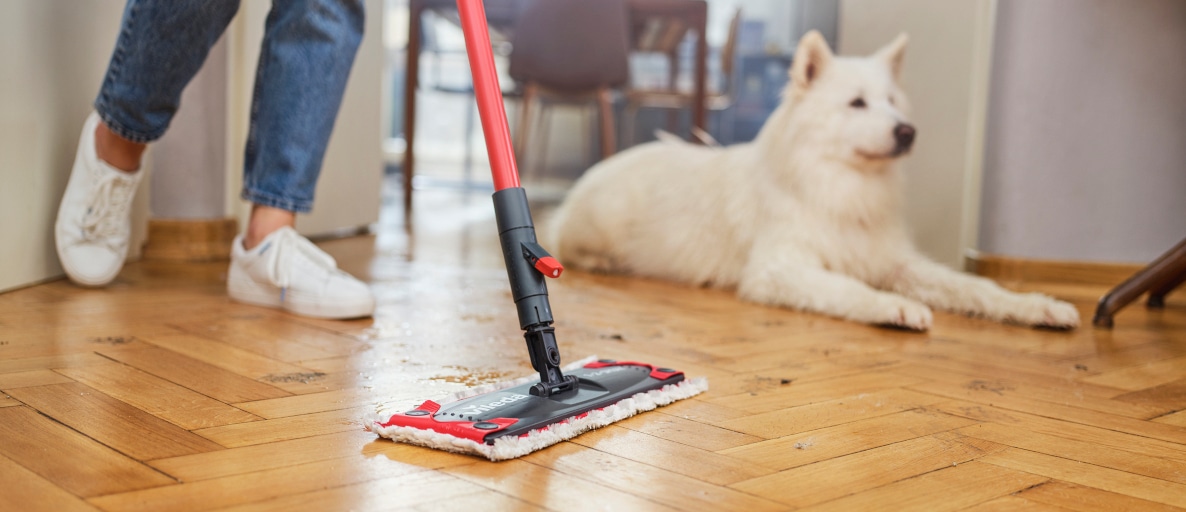How to Mop Properly? Tips for Different Floor Surfaces

The act of mopping might seem relatively straightforward: just add water and cleaner to a mop and scrub the floors. While this basic understanding isn't entirely wrong, the reality is a bit more nuanced. With a multitude of floor surfaces, each with its unique requirements for maintenance, understanding the correct method, products, and frequency is crucial for preserving your flooring's look and longevity. Keep reading.
Mopping methods for various floors
Maintaining clean floors is an integral part of a tidy home. Different flooring materials demand specific care to retain their quality. Here's how you can master the art of cleaning your floors through tailored mopping methods:
How to mop vinyl floors
Begin by sweeping or vacuuming your floor to remove any dirt or debris.
Wet your mop in clean water. Feel free to add a small amount of mild dish soap for added cleanliness, but this is optional. Remember to wring out your mop so that it is damp instead of wet. The Vileda Turbo Spin Mop allows you to have full control of the dampness of the mop, from the pedal activated wringer.
Mop the floor in small sections. Spend time on every section, making sure your mop strokes cover all areas.
Allow the floor to air-dry completely. Avoid walking on it or placing furniture back till it's entirely dry.
Proper mopping techniques for laminate floor
Laminate floors, offer a cost-effective alternative to hardwood, but these demand a gentle touch. Opt for a dry or slightly damp mop to prevent water damage. Utilise a specialised laminate floor cleaner or create a mixture of vinegar and water for effective yet gentle cleaning.
You can try both the Vileda spray mops and spin mops that allow dampness control either by the amount of pressing the mop into the wringer or by the times you press the pedal. As an alternative, you could also consider the Vileda 1-2 Steam Mop, which would work properly on a sealed laminate floor at the lowest steam setting.
How to mop wooden floor
Wooden floors, prized for their natural beauty, require meticulous care to preserve their lustre. Begin by dry mopping or vacuuming to eliminate debris.
Follow up with a well-wrung damp mop using a wood-friendly cleaner. We would recommend the Vileda Turbo Mop, or the 1-2 spray mop where you have full control of the level of dampness and water being used.
It'’s crucial to avoid excessive water, and any spills should be promptly wiped up to prevent damage.
How often should you mop your floor?
The frequency of floor mopping is a crucial consideration for maintaining a clean and hygienic living space.
High-traffic areas, such as the kitchen or a hallway, may require weekly cleaning to combat the influx of dirt.
Conversely, less-frequented spaces can be cleaned every two weeks or as needed.
The key is to adjust the frequency based on visible dirt, spills, and foot traffic.
Conclusion
Properly mopping your floors allows you to maintain a clean and fresh living space. From vinyl to laminate and wooden floors, understanding the right techniques is essential.
Ready to transform your cleaning routine? Find the best high-quality mops at Vileda!








